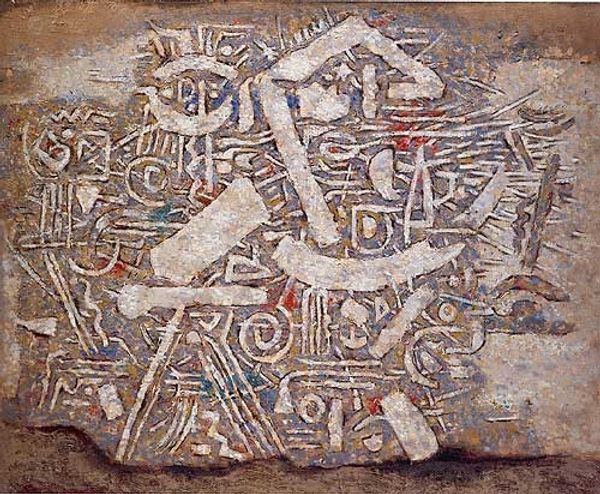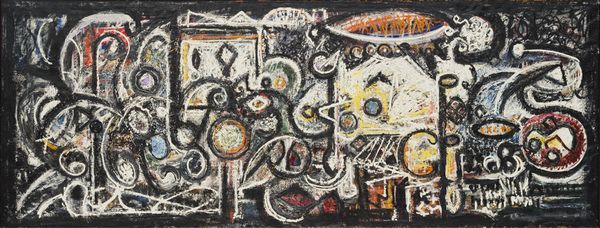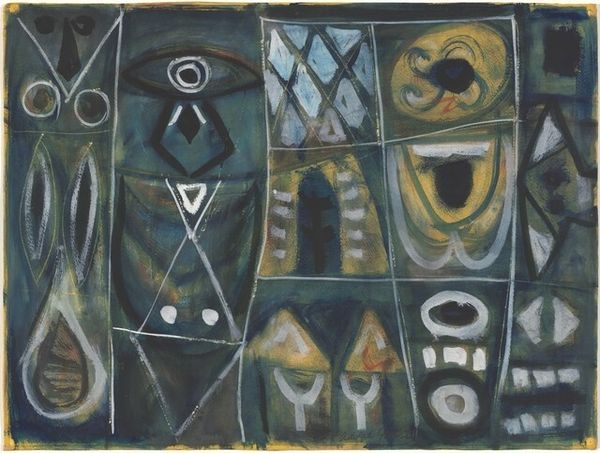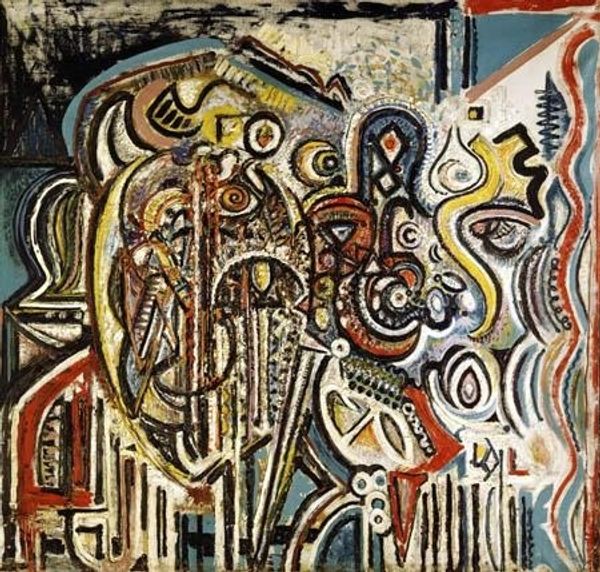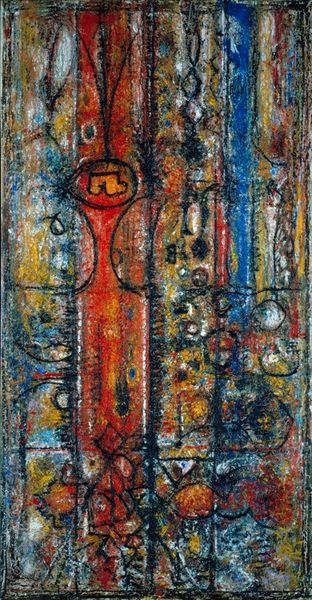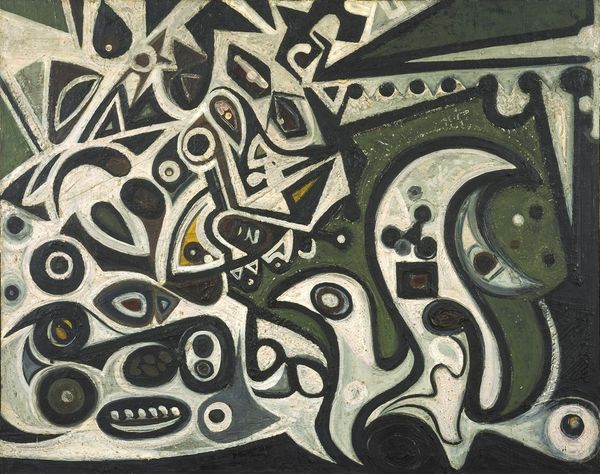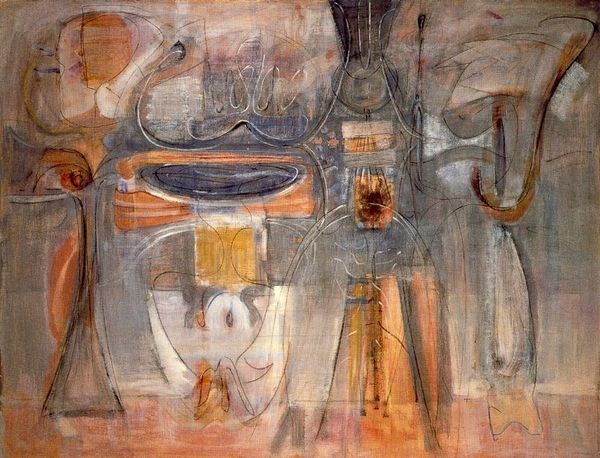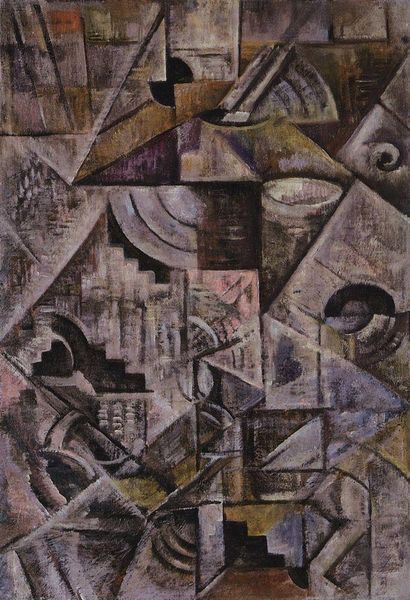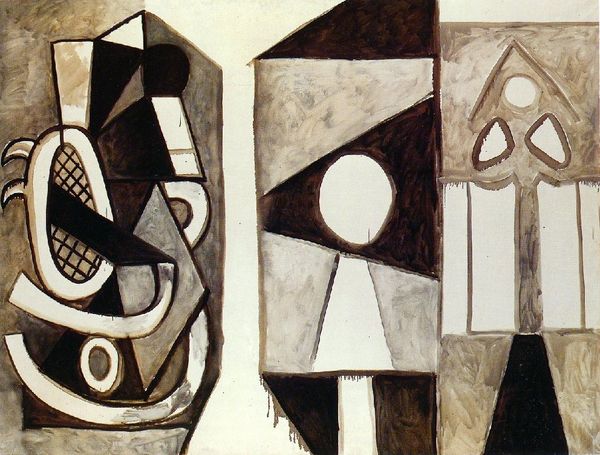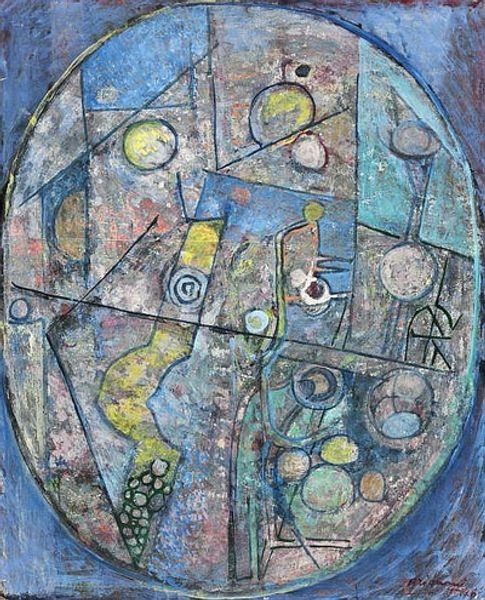
Symphony No. 1, The Transcendental 1942
0:00
0:00
richardpousettedart
Museum of Modern Art (MoMA), New York City, NY, US
painting, oil-paint
#
abstract-expressionism
#
abstract expressionism
#
non-objective-art
#
painting
#
oil-paint
#
form
#
geometric
Copyright: Richard Pousette-Dart,Fair Use
Editor: So, this is Richard Pousette-Dart's "Symphony No. 1, The Transcendental" from 1942. It's an oil painting currently hanging in MoMA. I'm immediately struck by its layered complexity; there are so many geometric and organic forms fighting for space. What do you make of a piece like this? Curator: Well, looking at this, I'm immediately drawn to consider Pousette-Dart's process. In 1942, abstraction was evolving rapidly, fueled by anxieties and new technologies, so how did those enter his studio? How did that particular paint manifest itself in such an intricate, almost obsessive, manner? We're talking about physical labor here. Editor: So, the means of production influence the finished piece? Curator: Absolutely. The way Pousette-Dart built up these layers—likely using brushes and maybe other tools too – reflects a kind of meditative engagement. And the materials themselves speak to accessibility. What kind of oil paints were available? Mass-produced, or hand-ground pigments reflecting a particular value placed on artisanship? Were these materials precious? What did that mean to him? Editor: I hadn't thought about the materiality of the paints so deeply! Did he see this process as a type of labor, like a factory worker even? Curator: Maybe not in the same explicit terms, but the physical act of creation, the sheer time invested... it's a testament to the value he placed on making. I also wonder about its accessibility. Art shouldn’t exist in a bubble. Editor: That's really changed how I see this painting. It’s not just about forms; it's about the entire production – the artist's labor, the materiality of the paints. It brings it down to earth, almost! Curator: Exactly! Art, no matter how “transcendental,” is always grounded in the material conditions of its creation. Focusing on these tangible aspects offers a richer understanding, a more complete perspective on not just what the artist wanted us to feel but also their connection to it physically.
Comments
No comments
Be the first to comment and join the conversation on the ultimate creative platform.
